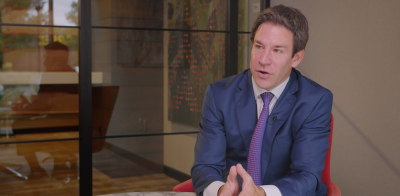As those of us who still live in areas of the country with cold, dark winters can attest, nothing beats the warmer weather ushering in a rebirth of flowers, flowering trees (is there anything more beautiful than a Yoshino Cherry in full bloom) and all that verdant green!
Given the bracing progress in U.S. economic expansion, the halting yet substantial progress in the fight-against-inflation-without-decimating-the-economy—and the outperformance of risk assets like equities (and the vast majority of alternative strategies) compared to still relatively high cash and bond yields so far this year—I thought spring’s exuberant renewal was an apt metaphor for taking a fresh look at investors’ portfolios.
Brush out the cash cobwebs
With the spring’s simple pleasures in the air, it may make sense to remember the KISS principle—keep it simple, stupid—in evolving one’s portfolio. Cash has been a great place to hang out for quite some time, and still offers a positive real rate of return, but gradually deploying those massive cash hoards into a select group of alternative strategies can substantially increase return potential without having to take on uncomfortable levels of risk.
As a brief reminder of year-to-date (YTD) performance, the vast majority of what I refer to as the “big five alternative strategies”—1) middle market private equity with an emphasis on secondaries, 2) senior secured commercial real estate private lending, 3) corporate and asset-based private lending, 4) multi-strategy funds and 5) dynamic liquid credit strategies—have generally outperformed cash and fixed income by comfortable margins.
(Although outperforming fixed income is probably nothing to brag about since the Barclays Agg is doing the broken-record thing again by being down around 0.8% YTD.)
However, each of these strategies has underperformed U.S. equities by a comfortable margin as well. And that’s exactly the point we’ve been highlighting in the last several strategy notes: Unless you are comfortable ramping up equity risk at a now 21X forward earnings (or reaching for duration1 and praying for a recession) the first, second, and maybe third stop for cash deployment in the current market and economic environment should be investment strategies that…let’s say it together…may continue to substantially increase return potential without taking uncomfortable levels of risk.
Greed and fear
In past strategy notes, we have discussed this concept within the framework of the efficient frontier2 (i.e., take more risk and volatility to boost returns, but don’t get carried away in case any number of risk factors shows up and drives substantial market losses).
But for this strategy note, let’s use an even more basic framework of analysis: Greed and fear.
When most seasoned market participants speak of greed and fear, it’s in an attempt to keep investors from succumbing to either of these emotions at extreme points in market cycles. Greed can show up at the worst time close to market peaks and drive risk appetite to levels that can lead to uncomfortable losses. Fear can take over near bear market bottoms and drive investors to sell and lock in losses that may take years to recoup.
However, a healthy balance of greed and fear can often help prevent irrational exuberance or panic from impacting portfolios.
Balancing greed and fear to deploy cash
In the current market environment, most investors are trying to rationally balance greed and fear, particularly as they look to deploy mountains of cash. What might this balancing act look like?
Some degree of greed must be embraced to recognize that, even though cash yields are still attractive now, there are alternatives to cash that have the potential to lead to better investment returns—without taking on all of the risk and whacky volatility in public markets.
A degree of fear is also important (even after the last almost 18 months equity market returns) to understand that multiples/valuations are highly elevated, the Fed is still draining their balance sheet with stagnating money supply growth, and even though recession risk has dropped, it is still a possibility over the next 12 to 18 months.
So, as investors continue to balance greed and fear, most roads still lead back to strategies that may generate the following attributes:
- Return potential: High single-digit to low teens return potential from either an abundance of income or capital appreciation/growth potential.
- Risk: Less downside risk than equity or potentially even fixed income markets.
- Sensitivity: Low sensitivity to public markets (meaning low beta3 and low duration).
- Volatility: Strategies that can demonstrate lower volatility.
The beauty of portfolio construction
Bringing us back to the season, even spring flowers don’t pop up all at once—they develop gradually—and it’s OK for your allocations to evolve that way too. The beauty of portfolio construction is that evolving your allocations to potentially generate greater returns without exceptional risk is not a series of binary decisions.
If you have 10% in cash, 10% in alternatives, 30% in fixed income and 50% in equities, you don’t have to suddenly move to 0% cash, 25% alternatives, 25% fixed income and 50% in equities.
But, evolving to 5% cash, 15% alternatives, 30% fixed income and 50% equities may make a lot of sense because—with the growing reality that potential opportunities in key alternatives may be surpassing the utility of last year’s cash allocations—“the Time for the Right Alts is Still Now!”
Investing in alternatives is different than investing in traditional investments such as stocks and bonds. Alternatives tend to be illiquid and highly specialized. In the context of alternative investments, higher returns may be accompanied by increased risk and, like any investment, the possibility of an investment loss. Investments made in alternatives may be less liquid and harder to value than investments made in large, publicly traded corporations. When building a portfolio that includes alternative investments, financial professionals and their investors should first consider an individual’s financial objectives. Investment constraints such as risk tolerance, liquidity needs and investment time horizon should be determined.




